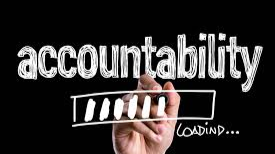
In a world that glorifies hustle, burnout has become an almost inevitable reality for high-achievers. The constant pressure to perform, lead, and deliver results can slowly erode well-being, leaving even the most driven professionals feeling exhausted, disengaged, and overwhelmed. But burnout is not a badge of honor—it’s a signal that something needs to change.
The good news? Recovery is possible. The key lies in setting boundaries, creating balance, and unlocking breakthroughs that allow for sustainable success. And while self-awareness is essential, navigating these shifts alone can be challenging. That’s where working with a coach can be a game-changer.
The Power of Boundaries
One of the biggest contributors to burnout is a lack of clear boundaries. When work seeps into every aspect of life—late-night emails, weekend calls, endless obligations—it becomes impossible to recharge. High performers often struggle with setting limits, fearing they’ll appear uncommitted or miss opportunities. But the reality is that boundaries protect energy and focus, making it easier to perform at a high level without burning out.
Start by identifying where boundaries are lacking. Do meetings dominate your calendar, leaving no time for deep work? Are you constantly available, responding to messages at all hours? Once you pinpoint the problem areas, take intentional steps to create separation. That might mean blocking out time for focused work, setting clear expectations about response times, or simply learning to say no.
A coach can help you gain clarity on where boundaries need to be reinforced and provide strategies for maintaining them—without guilt or fear of repercussions. Boundaries aren’t about doing less; they’re about making room for what truly matters.
Finding True Balance
The idea of work-life balance can feel like a myth, especially for those in demanding roles. Instead of striving for a perfect equilibrium, think about balance as a dynamic process—one that requires regular check-ins and adjustments.
Start by evaluating where your time and energy are going. If work is consuming everything, consider small shifts that create space for other priorities. That might mean carving out time for exercise, hobbies, or meaningful connections. It’s not about rigidly dividing time but about ensuring that different areas of life are getting the attention they need.
Another critical element of balance is recovery. High performers often underestimate the importance of rest, but peak performance isn’t possible without it. Sleep, movement, and mental downtime are not luxuries—they’re necessities. Just as elite athletes prioritize recovery to sustain performance, professionals must do the same.
A coach can help you identify blind spots and develop personalized strategies to restore balance—ensuring that success is sustainable, not just achievable.
Breakthroughs That Shift Everything
Burnout isn’t just about exhaustion—it’s often a sign that something deeper is off. A breakthrough moment comes when you recognize that success doesn’t have to come at the cost of well-being.
This shift often involves redefining what achievement looks like. Instead of measuring success by output alone, consider the quality of life alongside professional goals. Are you engaged in work that energizes you? Do you feel a sense of purpose in what you do? When success is aligned with personal fulfillment, work becomes more sustainable and meaningful.
Another game-changing breakthrough is embracing support. Many high achievers take pride in handling everything on their own, but true leadership involves delegation and collaboration. Seeking mentorship, investing in professional development, or working with an executive coach can accelerate growth while preventing burnout. A coach serves as both a thought partner and accountability guide, helping you gain insights, challenge limiting beliefs, and create actionable plans that align with your long-term vision.
Final Thoughts
Burnout isn’t an inevitable cost of success—it’s a warning sign that something needs to shift. By setting firm boundaries, creating a sense of balance, and allowing for breakthroughs in mindset and strategy, it’s possible to achieve success without sacrificing well-being.
The most effective professionals aren’t the ones who push themselves to exhaustion—they’re the ones who learn how to sustain their energy, creativity, and impact over the long term.
And if you’re ready to make that shift, partnering with a coach can provide the clarity, structure, and support you need to create lasting change.
Where can you start making a shift today?
Helping Executive Women Reduce Stress, Prevent Fatigue & Avoid Burnout
📩 Follow me for more insights or send me a message to connect!









